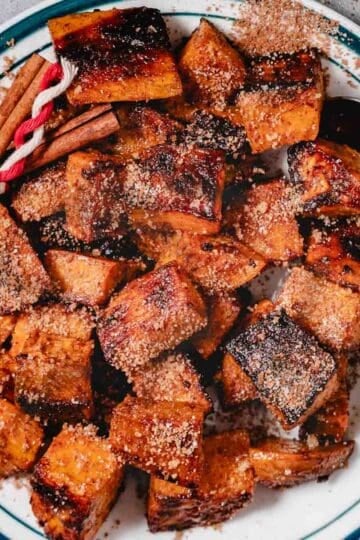Learn how long to roast vegetables at 400 degrees for beautifully crispy, caramelized, and tender results every time! Almost any type of vegetable can be roasted, allowing for a wide variety of options and combinations.

Oven roasting is a great way to prepare all your veggies. It's very easy and the flavors are always great.
At 400 degrees, there is enough heat to nicely caramelize all veggies without losing the nutrition on the food.
Jump to:
- Why We Love Roasting Our Vegetables
- Top Tips for Roasting Vegetables at Home
- Equipment Needed:
- Why Should I Use Parchment Paper?
- Do I Need Organic Vegetables?
- The Best Veggies for Roasting
- Seasonings for Roasted Vegetables
- Roasted Acorn Squash with Pumpkin Pie Spice
- Roasted Cauliflower and Asparagus with Carrots
- Roasted Spaghetti Squash
- Roasted Cauliflower and Carrots
- Roasted Asparagus at 400°F
- How To Make Roasted Broccoli and Carrots
- Oven Roasted Small Eggplants
- Roasted Garlic Cauliflower
- Roasted Garlic and Broccoli
- Roasted Garlic
- Oven Roasted Sweet Potatoes
- Oven Roasted Broccoli
- Roasted Whole Bell Peppers
- Crispy Roasted Brussels Sprouts
- Roasted Small Fairytale Eggplants
- Roasted Potatoes with Garlic and Paprika
- Oven Roasted Broccoli, Cauliflower, and Garlic
- Leftover Roasted Vegetables
- What Goes with Roasted Vegetables
- Key Takeaway
- Frequently Asked Questions
Why We Love Roasting Our Vegetables
- Roasting is simple – toss the vegetables in oil and seasoning, then let the oven do the work.
- Once vegetables are in the oven, you have time for other things to do, making it a very convenient cooking method.
- Roasting results in a nice combination of tender interiors and slightly crispy exteriors, adding a delightful contrast in texture.
- Roasted vegetables look great with their bright colors and caramelized edges.
- Roasted vegetables can be made in large batches and used for meal prep, making the next few lunches or dinner easy to pull together.

Top Tips for Roasting Vegetables at Home
- Set the oven rack to the center position in the oven.
- Preheat the oven to 400 degrees F or 204 degrees C.
- Wash and dry vegetables.
- Cut veggies into even-sized pieces.
- Toss vegetables with olive oil. Make sure each piece is lightly coated with oil, not drenched.
- Season with salt and pepper.
- Spread out the vegetables on a sheet pan, making sure there is air circulating around each piece.
- Rotate the pan halfway through baking time.
- Roast for 15-40 minutes until tender.

Equipment Needed:
- Cutting board
- Knife
- Large bowl
- Tongs
- Sheet pan
- Parchment paper
- Oven mitt
Our favorite salt for roasting veggies is from Oryx. Oryx refillable salt grinder is excellent salt for roasting vegetables. The salt is from the Kalahari Desert and has a clean taste. It's free from additives and anti-caking agents.
Why Should I Use Parchment Paper?
Using parchment paper for roasting vegetables simplifies the cooking process.
Parchment paper prevents sticking and helps improve the overall quality of your roasted vegetables. It's a handy kitchen tool that can make your cooking experience more convenient and enjoyable.
Do I Need Organic Vegetables?
You can roast organic vegetables using the same method as conventional ones. If you have the option and budget permits, opt for organic varieties.
I enjoy farmers' markets for their fresh produce. Whole Foods Market is also an excellent source of high-quality organic produce.
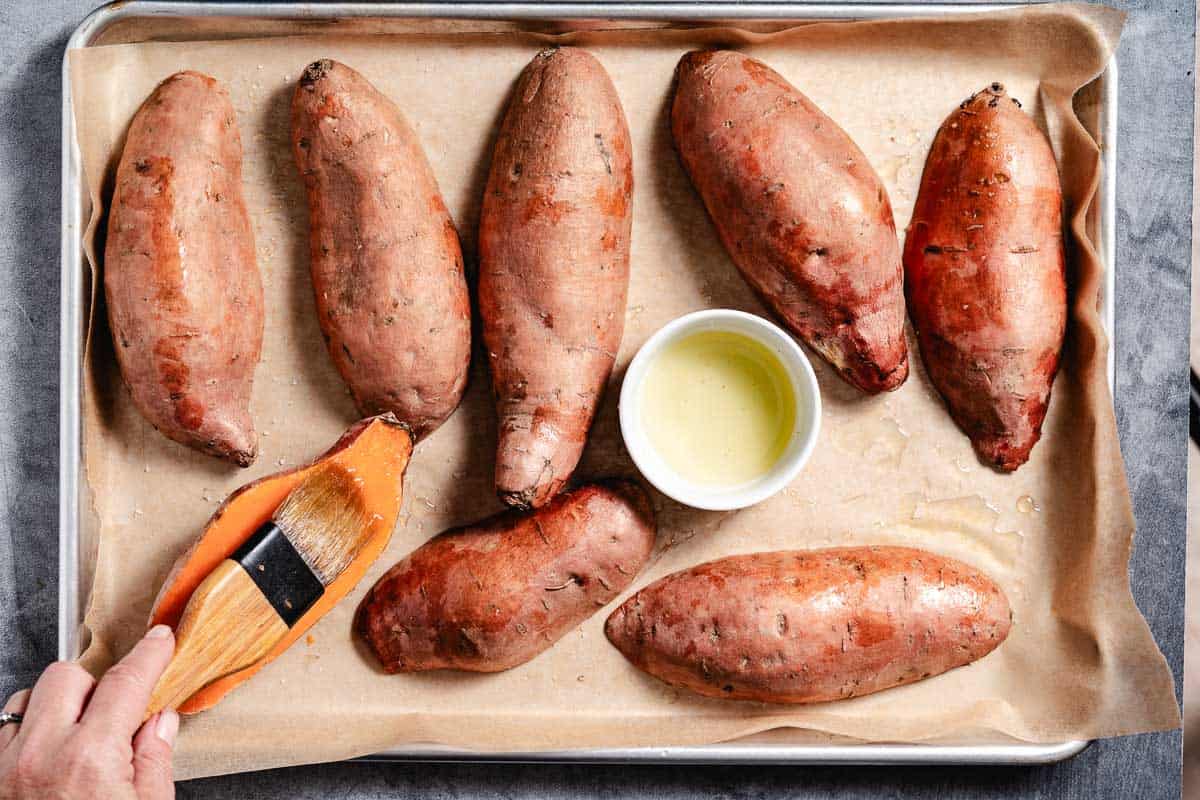
The Best Veggies for Roasting
The best vegetables for roasting are the freshest ones. They should be free from dents, black spots, soft spots, or signs of decay.
The firmness or water content of the vegetables you're roasting will determine how to slice and dice them.
- Root vegetables: white potatoes, sweet potatoes, parsnips, carrots, radishes, and beets are all good vegetables to roast.
- Long vegetables: asparagus, green beans.
- Squash: Butternut squash, spaghetti squash, delicata, honeynut, kabocha, acorn squash, etc.
- Peppers: Bell peppers or chili peppers, i.e. jalapeno, serrano, poblano, etc.
- Alliums: Garlic, white, yellow, red onion, or scallions. shallots, leeks, chives.
- Cruciferous vegetables: broccoli, cabbage, cauliflower, turnips, Brussels sprouts, bok choy.
- Leafy vegetables: purple cabbage, green cabbage, kale.
Seasonings for Roasted Vegetables
These are the recipes we regularly enjoy at home, most of them prepared with simple seasonings like salt and pepper. Occasionally we add whole or smashed cloves of garlic for extra flavor.
In the last 10 minutes of roasting, you can add a sprinkling of cheese. Parmesan, Romano and cheddar are all great options.
Experiment with seasonings by incorporating chili powder and cayenne, along with garlic powder, or even a little cinnamon. To add freshness and flavor, try adding fresh herbs. Chopped cilantro and parsley work well after you take it out of the oven.
I even add homemade blackened seasoning before roasting vegetables sometimes. It adds spice and a little smoky flavor to the food.
The following roasted vegetable recipes are perfect for summer BBQs, Sunday dinners, Thanksgiving, and Christmas.
Roasted Acorn Squash with Pumpkin Pie Spice
You can also use Butternut squash for this cozy recipe.

Roasted Cauliflower and Asparagus with Carrots
This is a quick dish to pull together for a weeknight dinner. Roasting different types of vegetables comes down to one thing: getting them all to roast together at the same time. Follow the easy directions and you can make this healthy roasted vegetable side dish.
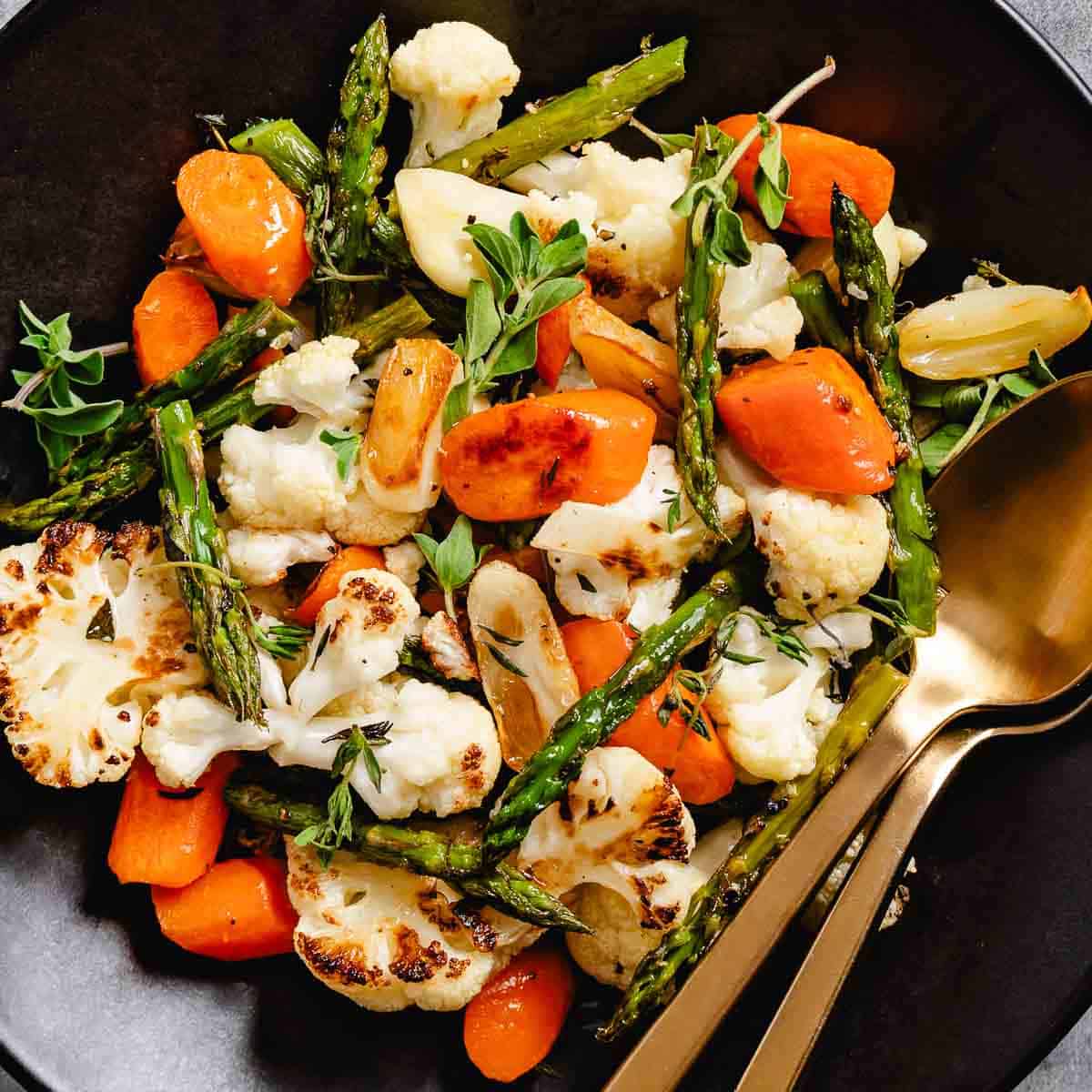
Roasted Spaghetti Squash
Transform this humble vegetable into a low-carb, gluten-free pasta alternative that's as delicious as it is nutritious. A healthy base for a variety of dishes, roasted spaghetti squash is a fabulous vegetable that looks like spaghetti. It has a sweet taste and is the perfect low-carb stand-in for pasta.

Roasted Cauliflower and Carrots
Sheet Pan Roasted Carrots and Cauliflower is a delicious recipe, requiring just a few ingredients and a hot oven. It makes a perfect side dish or salad topping. Pair with your favorite fish and meat Goes great with our Lamb Chop Recipe!
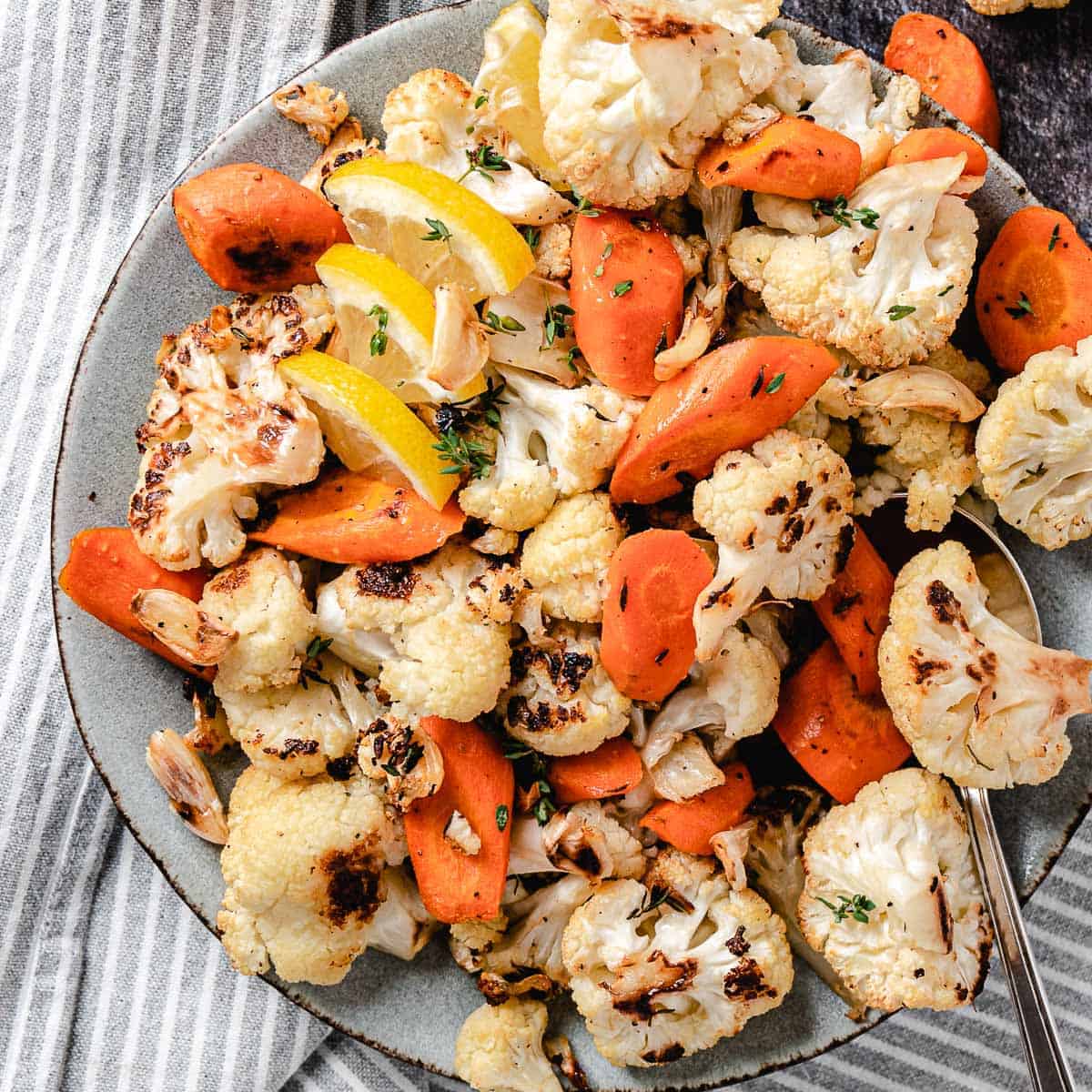
Roasted Asparagus at 400°F
Toss asparagus with olive oil, salt, and pepper, then roast in a hot oven at 400°F for 15 minutes until tender and caramelized. Serve as a side dish, garnished with optional Parmesan cheese and a squeeze of lemon for extra flavor.
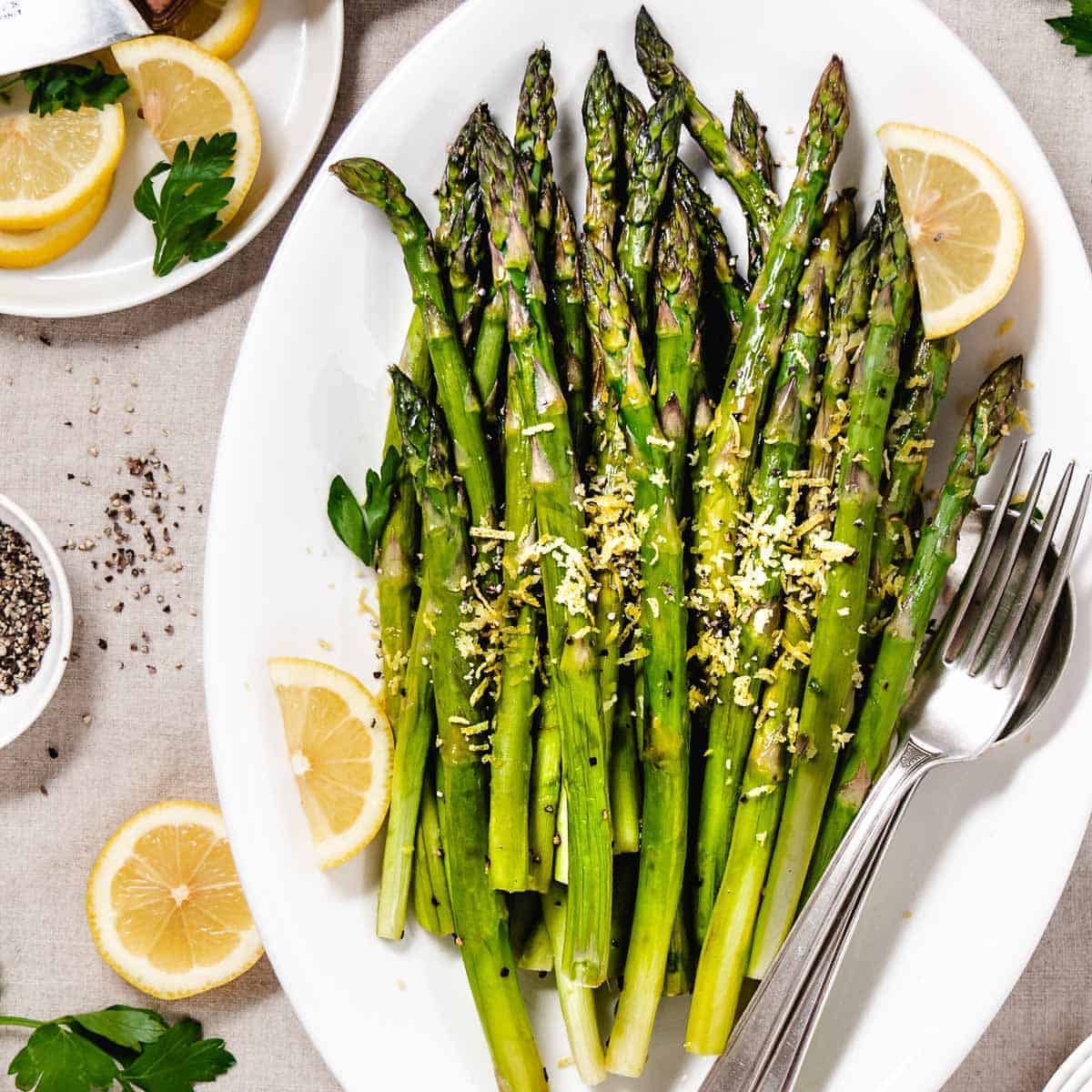
How To Make Roasted Broccoli and Carrots
This roasted broccoli and carrots recipe has perfect blend of flavors and textures. It's a nutritious side dish that's easy to make and impossible to resist!
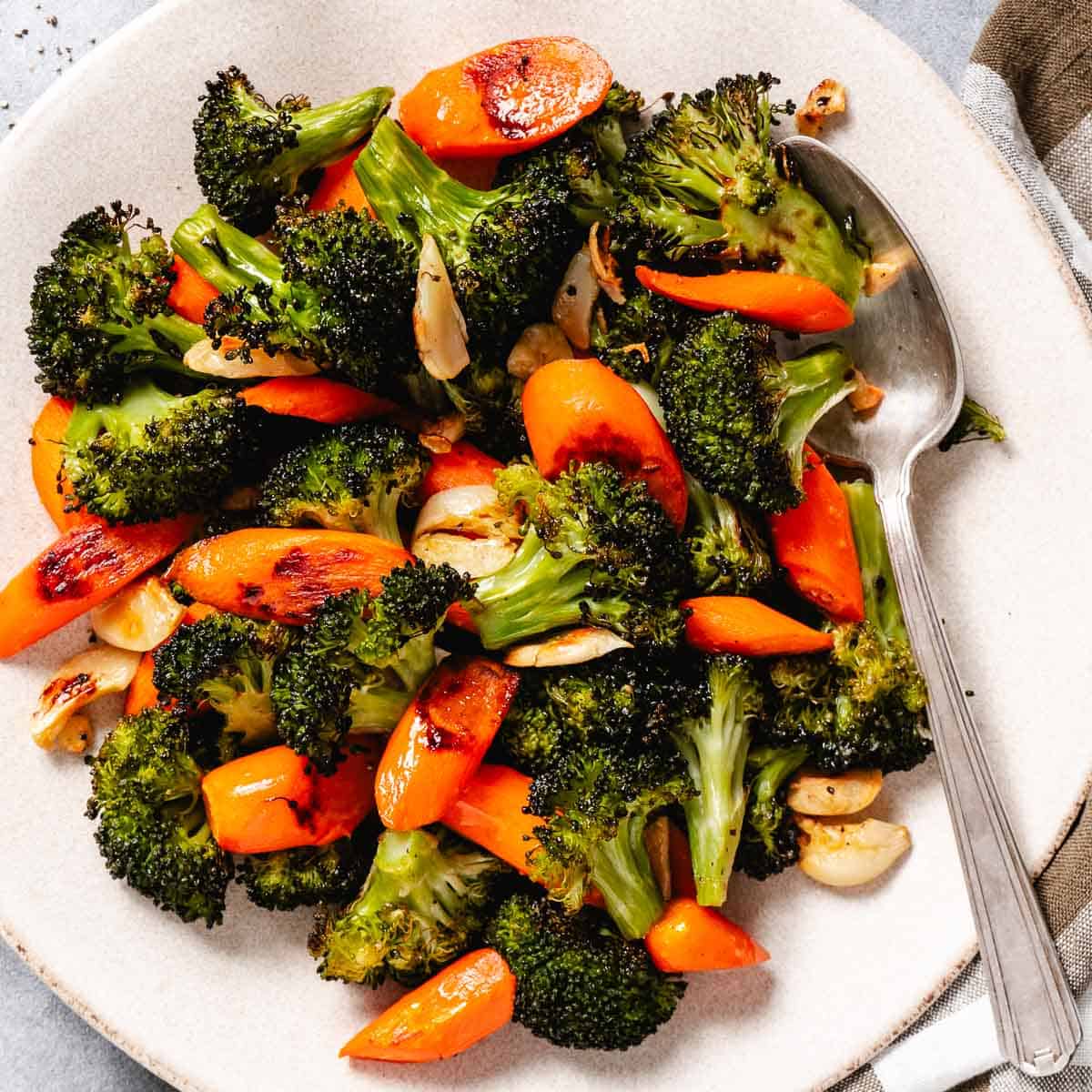
Oven Roasted Small Eggplants
For an easy roasted small eggplant dish, slice the mini eggplants in half. Brush them with olive oil. Season with salt, pepper, and your favorite spices. Roast at 400°F for 25 minutes. They will become tender and caramelized. This makes a delicious side dish or appetizer.

Roasted Garlic Cauliflower
For a tasty cauliflower side dish, mix cauliflower and garlic cloves with olive oil. Then, add salt and pepper. Roast in the oven for 25 minutes, until the cauliflower is tender and the garlic is caramelized.
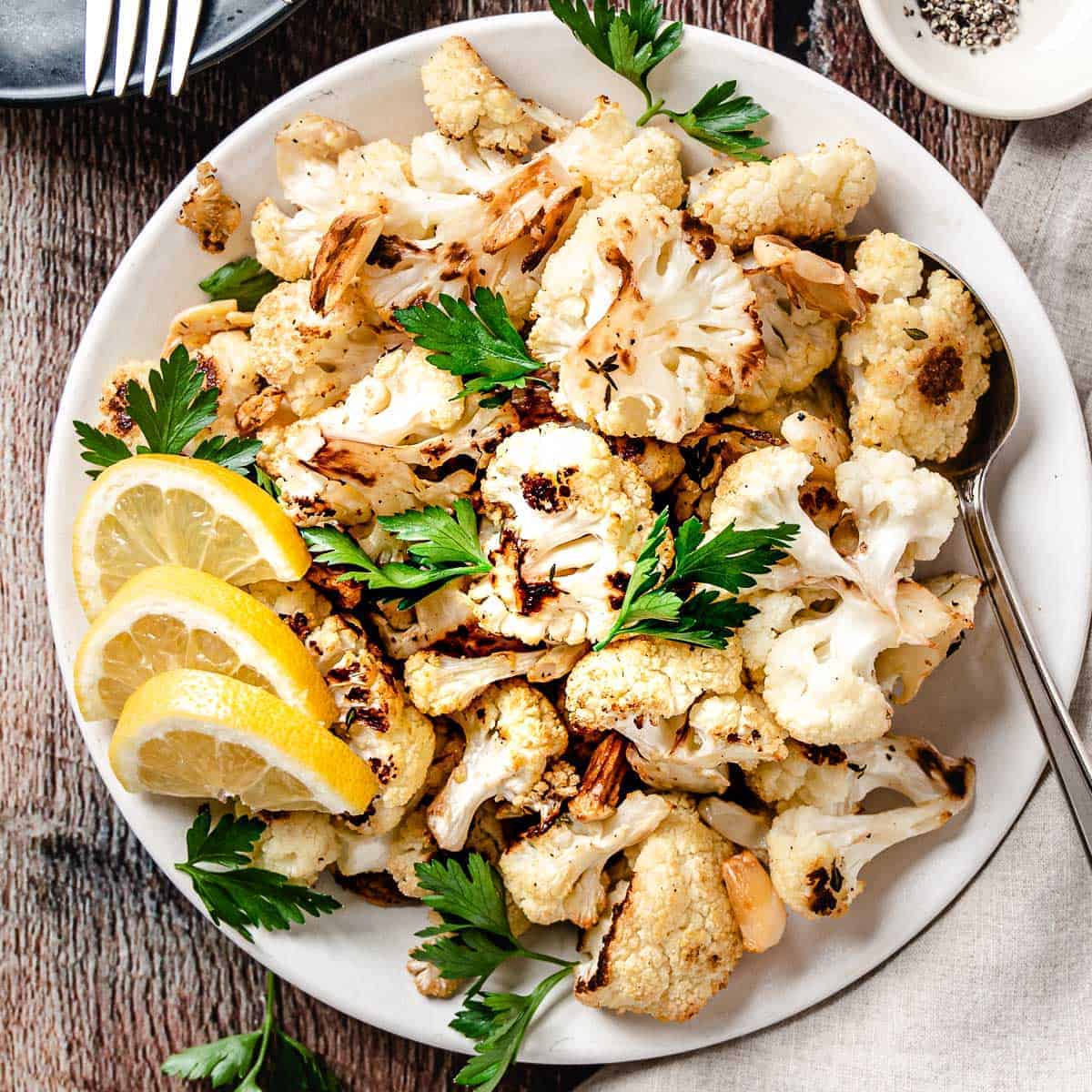
Roasted Garlic and Broccoli
To make roasted broccoli with cloves of garlic, toss broccoli with garlic cloves, olive oil, salt, and pepper. Then roast them in the oven at 400°F for 20-25 minutes or until the broccoli is tender and slightly crispy. The roasted garlic infuses the broccoli with a delicious garlicky flavor, creating the perfect side dish.

Roasted Garlic
To make a luxurious garlic spread, slice off the top portion of a garlic bulb to expose the cloves. Drizzle it with olive oil, and season with salt and pepper.
Wrap the bulb in aluminum foil and roast for 50 minutes until the cloves are golden brown.
The result is creamy, mellow garlic with a mild, sweet flavor. It's perfect as a dip, or salad topper.
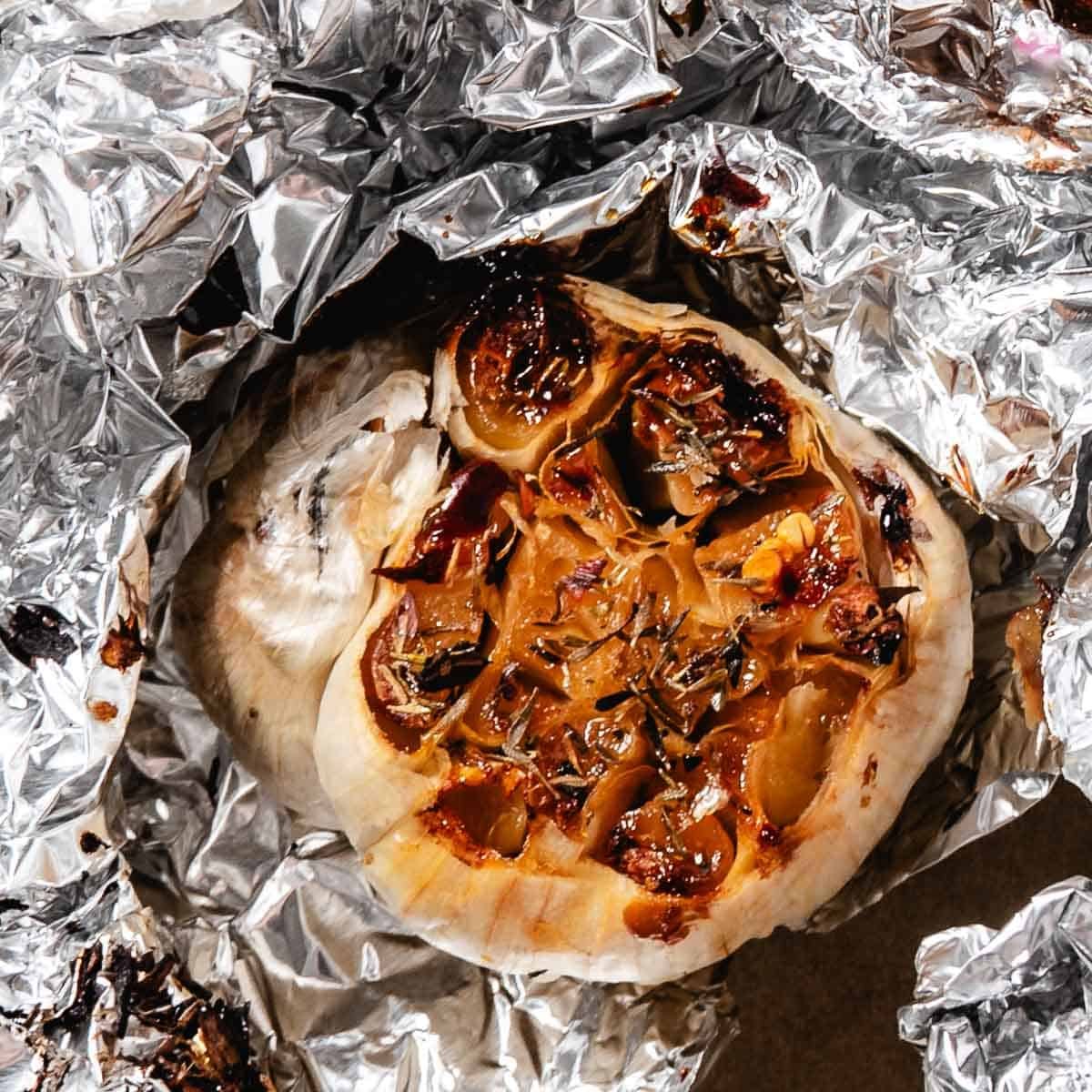
Oven Roasted Sweet Potatoes
These cubed sweet potatoes are an enjoyable side dish, so good they taste like candy. Their caramelized exteriors give way to creamy, tender interiors. They make a nutritious and flavorful addition to any meal, offering a perfect blend of sweetness and earthy richness. Roast at 400°F for about 30 minutes until sweet as sugar!
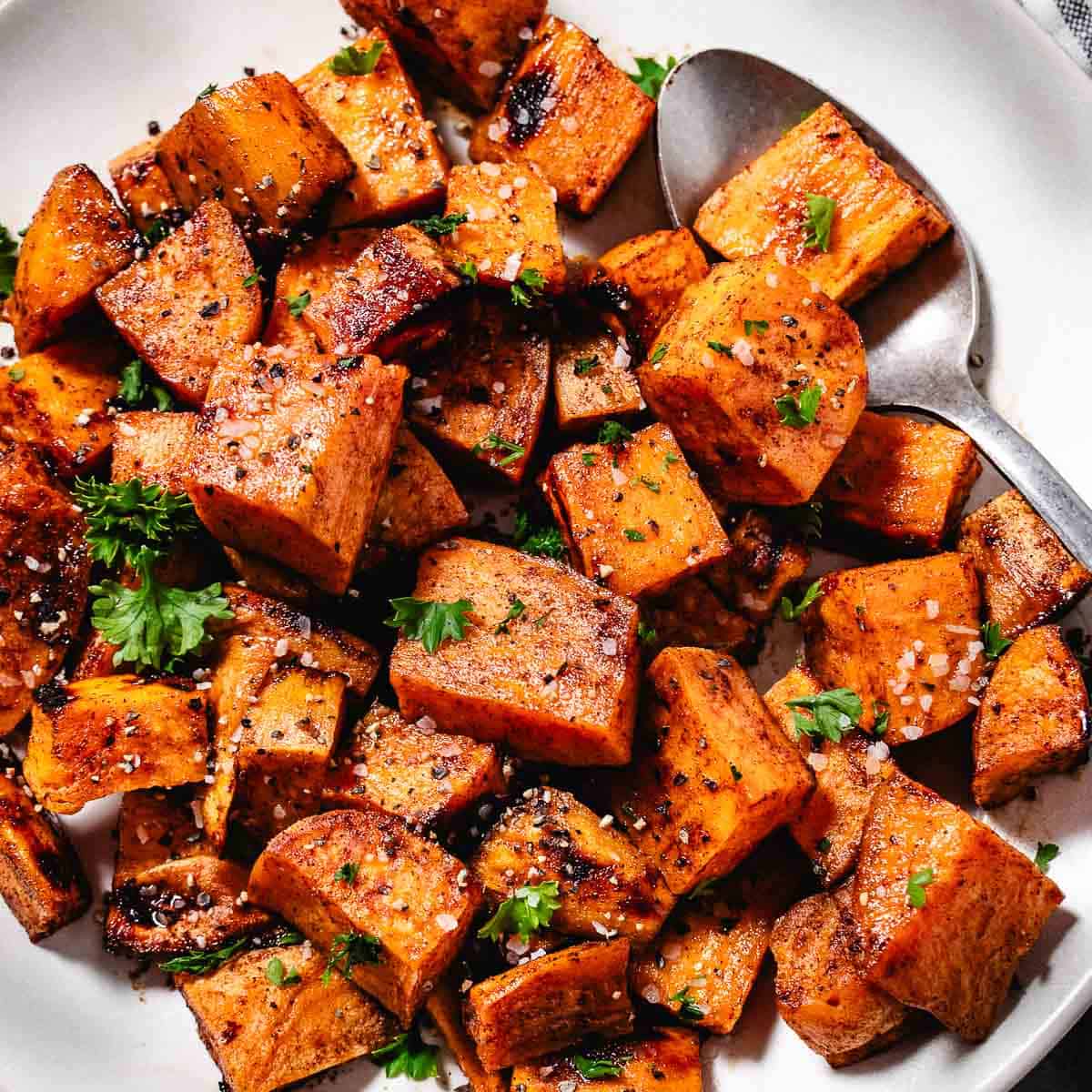
Oven Roasted Broccoli
Discover the perfect blend of crispiness and flavor with our roasted broccoli recipe. Roasting broccoli in the oven brings out all the earthy flavors of our favorite vegetable. The crispy edges and deep flavor make roasted broccoli perfect for weeknight meals or a little post-workout snack.
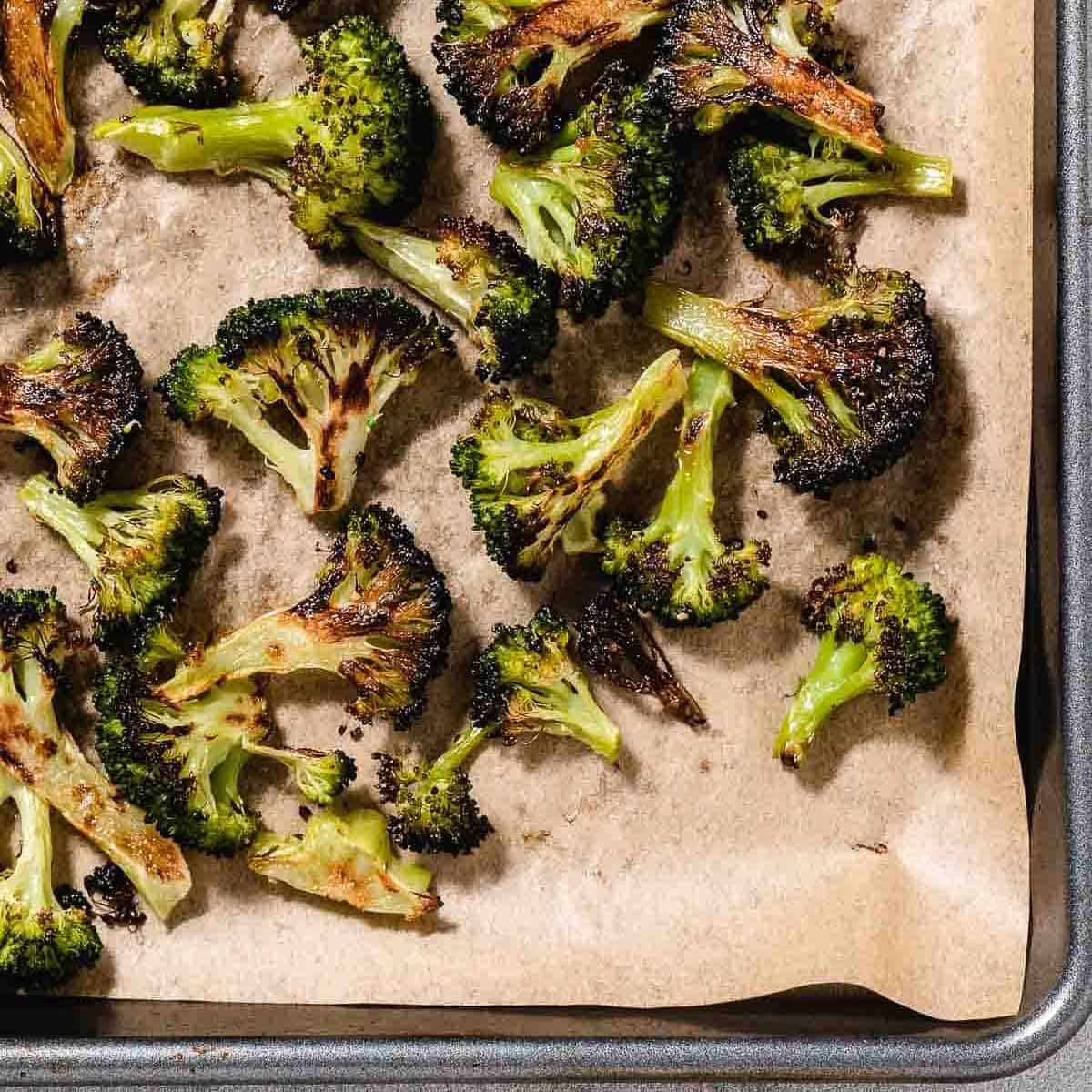
Roasted Whole Bell Peppers
Enjoy the rich flavors of oven-roasted bell peppers with this simple recipe.
You can drizzle them with olive oil, sprinkle with salt and pepper, and add herbs or garlic for extra flavor. Roasted peppers can be used in salads, sandwiches, pasta dishes, or as a tasty side. Enjoy their smoky sweetness in a variety of culinary creations!
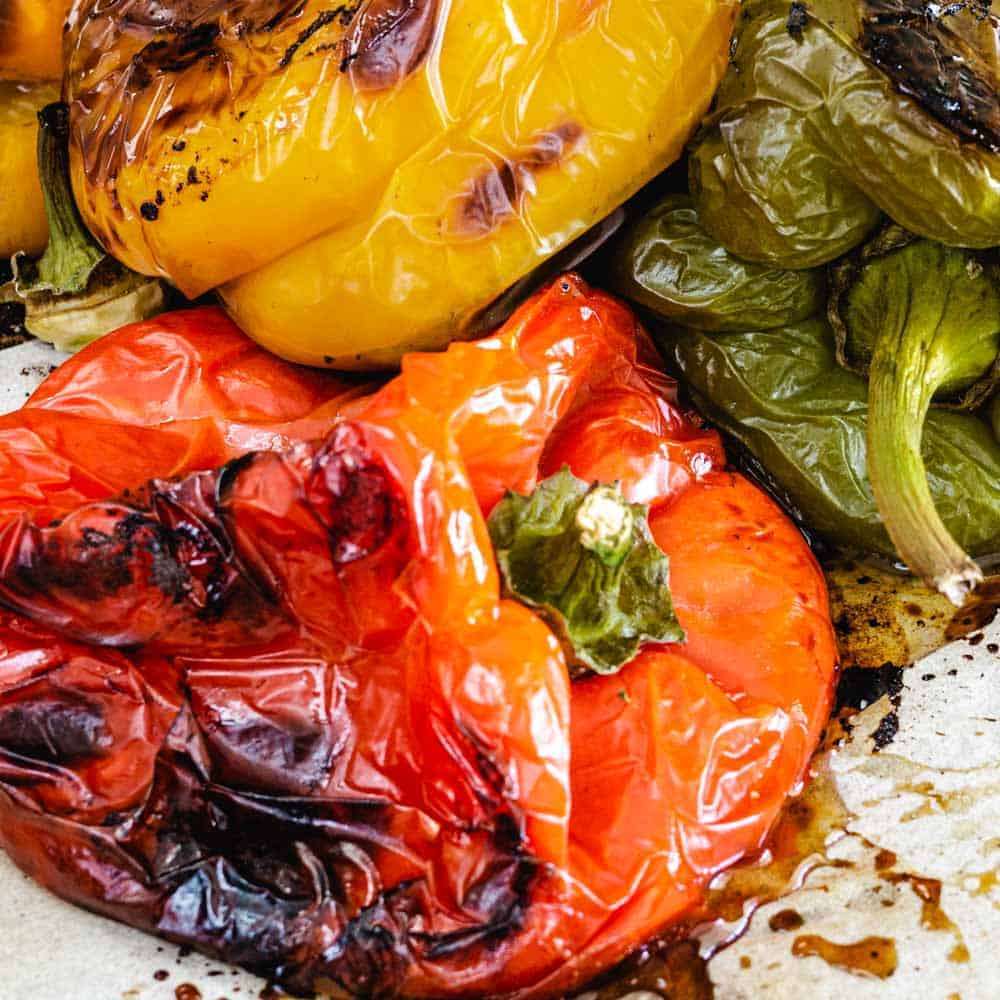
Crispy Roasted Brussels Sprouts
This quick roasted Brussels sprouts recipe is a breeze to prepare. It delivers consistently caramelized and crispy results every time! The outer leaves fall off the tiny cabbages and crisp into the perfect salty snack. Today is the time to try these for yourself!
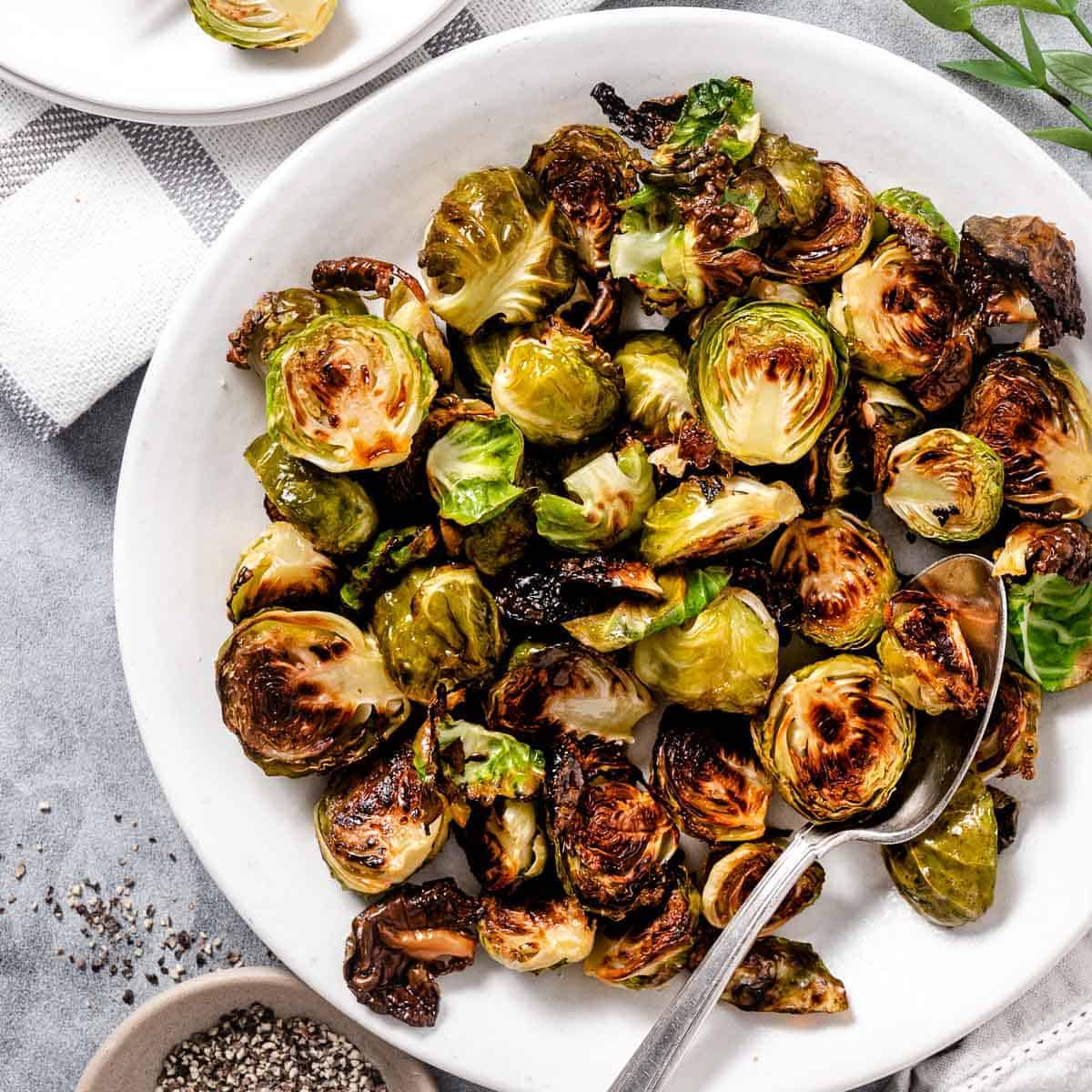
Roasted Small Fairytale Eggplants
For this batch of small roasted eggplants, I roast them with olive oil, salt, and pepper. To elevate the dish, I served roasted eggplants with sour cream drizzled with honey. To add freshness and visual appeal, I garnished the dish with fresh basil leaves and lemon slices.
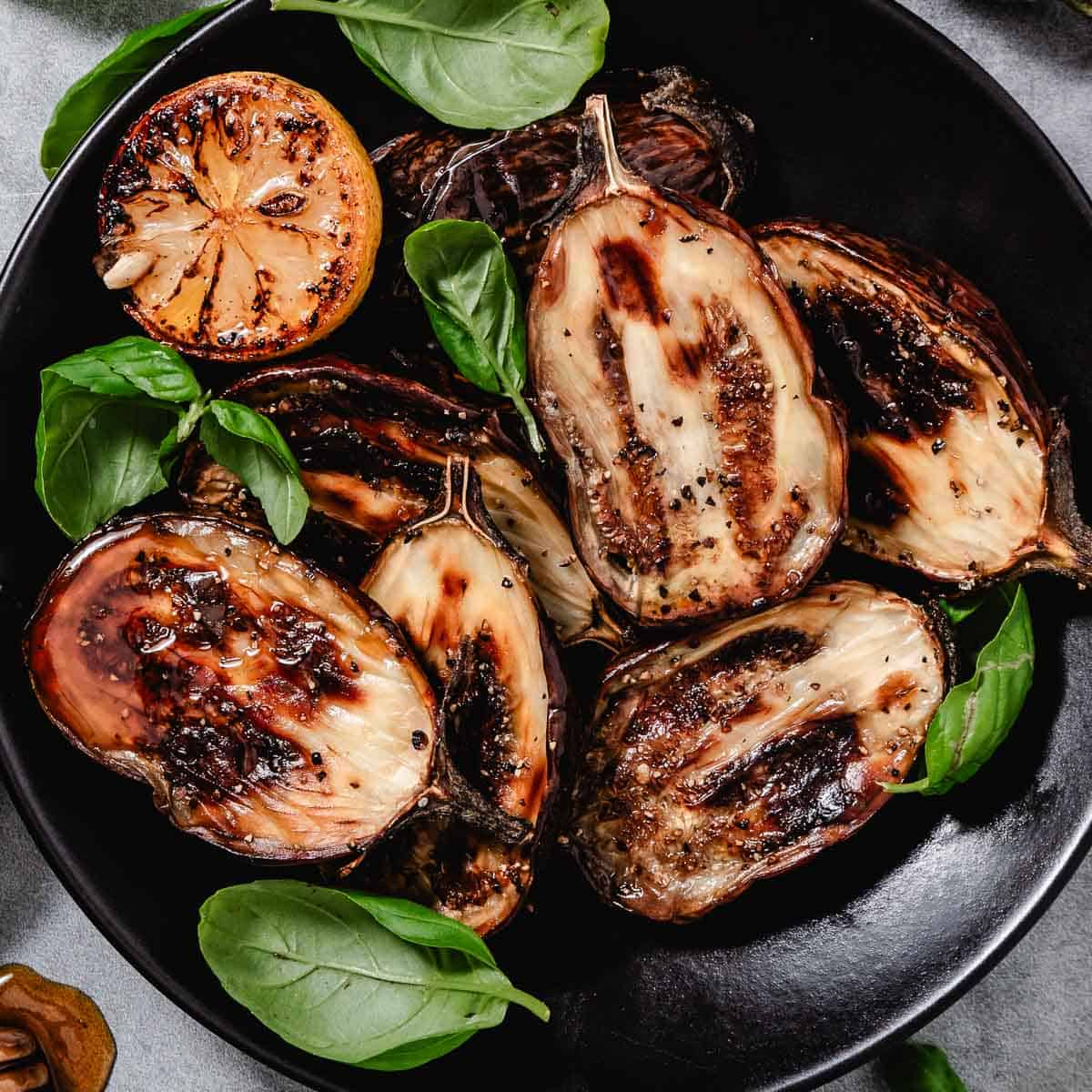
Roasted Potatoes with Garlic and Paprika
These russet potato chunks are roasted at 400 until the edges caramelize. They're a perfect substitute for French Fries!
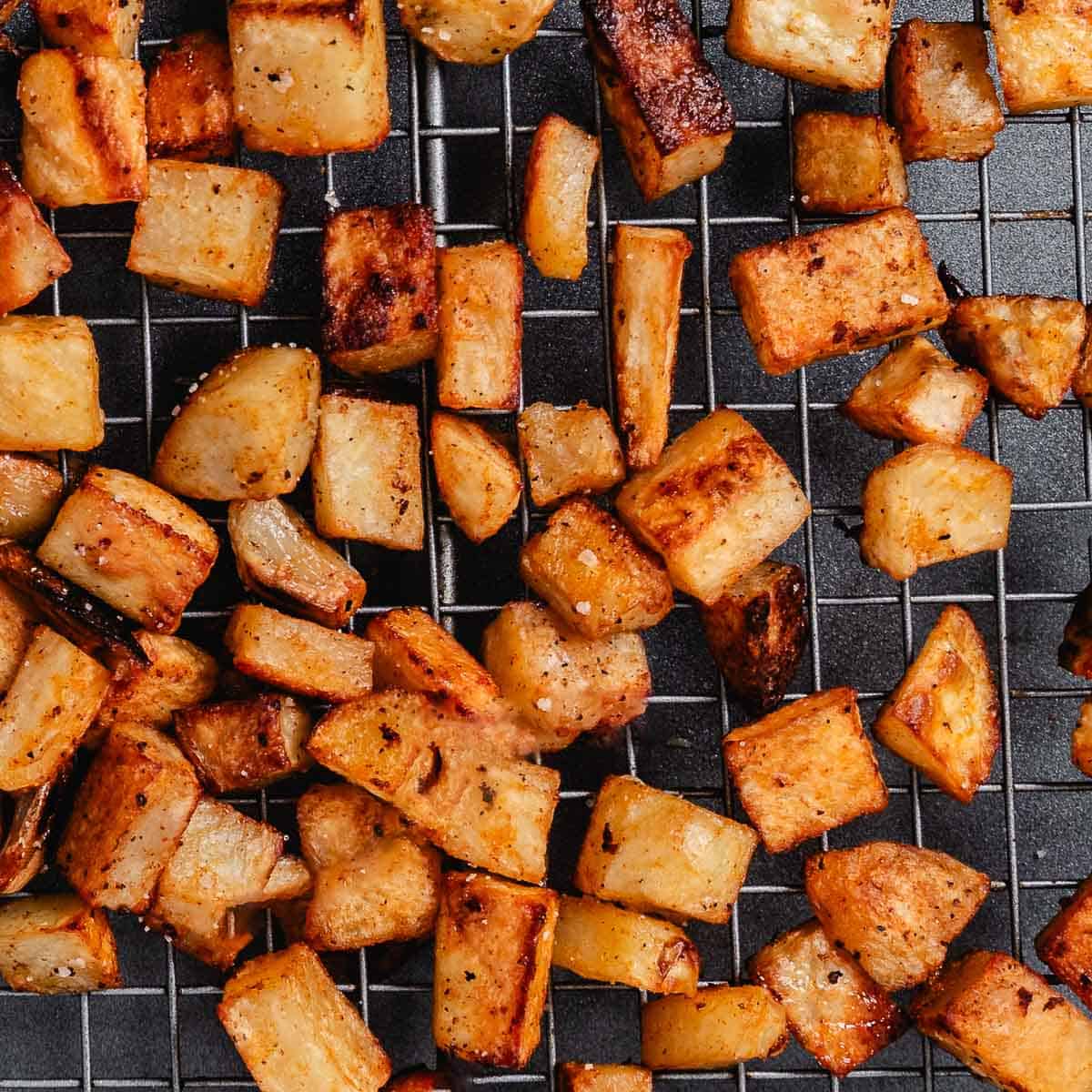
Oven Roasted Broccoli, Cauliflower, and Garlic
Whole garlic cloves are roasted with broccoli and cauliflower, becoming soft and sweet. Mashed and mixed in, they add rich, garlicky flavor to this all-natural side dish.

Leftover Roasted Vegetables
To store remaining leftovers, place them in a sealed airtight container and refrigerate for a maximum of three days.
We enjoy repurposing leftover roasted vegetables as omelet fillings or as a flavorful salad topping the following day. We advise against freezing them, as it can compromise their texture and flavor.
What Goes with Roasted Vegetables
For meal planning ideas, try the following dishes with any of these roasted vegetables:
- Pan Fried Yellowtail
- Pan Seared Chicken Breasts
- Pan Seared Chuck Steak Recipe
- Roasted Yellowtail with Old Bay
- Baked Coconut Shrimp with Mango Sauce
- Lemon Basil Roasted Chicken
Key Takeaway
Roasting vegetables is a fantastic way to enhance their natural flavors. Our method involves:
- Even Spacing: Ensure vegetables are spread out evenly on the baking sheet to avoid overcrowding and promote even cooking.
- Uniform Cuts: Cut vegetables into similar-sized pieces for consistent cooking times.
- Seasoning: Season vegetables with salt and pepper, and experiment with additional flavors like fresh herbs, garlic, and honey.
Roasting vegetables at 400°F is our magic number! This temp unlocks crispy perfection with golden caramelization outside and juicy goodness within.
Achieving perfectly roasted vegetables can be the game-changer you need. Roasting your veggies at 400 degrees F hits the sweet spot, ensuring delicious dishes without scorching temps.
Frequently Asked Questions
Roasted vegetables will remain fresh for 3-4 days in the back of your refrigerator.
Plan to serve about one-quarter pound per person for a generous side dish.
Yes, roasted vegetables are good when they're cold. You can dress them with a simple vinaigrette, top a green salad, and have a healthy meal.
Depending on the size of your vegetables, it should take about 20 minutes until the veggies are fork-tender when roasted at 400°F.
Yes, you can oven-roast your vegetables two days before your meal. To reheat, I put them in a hot skillet for a few minutes with a drop of butter or oil. It should crisp them back up.
Consider the flavors and textures of your roasted vegetables when choosing side dishes. For example, if your veggies are heavily seasoned, a simple rice pilaf might be an excellent complement. Conversely, if your veggies are plain, a creamy risotto could provide a good contrast. Matching your side dishes to your roasted vegetables can enhance the overall enjoyment of your meal.


